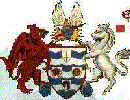Trains Page
![]()
Before I say anything about this subject I must iterate that I am NOT a train spotter which was an almost understandable vocation in the days of the magnificent steam engines but I cannot understand the thrill of identifying the featureless and soulless loaf of bread like sprinter trains that now grace our Welsh valley lines in particular.
What I am interested in is the awesome building work that was carried out by hand after the birth of the railways. Sadly much of the most amazing examples no longer survive after many were axed by the deluded Dr. Beeching. I was born in 1966 so I not only missed the steam era completely but also most of the branch lines condemned by Beeching were long gone by the time I was old enough to appreciate them.
My long term aim has therefore been to not only visit every restored steam railway in the country but also every abandoned railway feature I can find except of course those that have vanished completely under the guise of progress, and record as many photographic and other details as possible for the hopefully future enjoyment of others that have also missed the "good old days".
As a result of these studies, I am piecing together a very accurate map and photographic database of the Great Western Railway in particular.
![]()
Of my particular interest being a Welshman is the Ffestiniog Railway between Blaenau Ffestiniog and Portmadoc (Porthmadog) in North Wales which is proud to claim to be the oldest independent railway in the world. My interest has been fuelled recently after the announcement by John Prescott that he has recommended the rebuilding of the Welsh Highland Railway between Dinas, 3 miles South of Caernarfon, and Portmadoc, linking up with the Ffestiniog Railway and the Welsh Highland Railway Ltd. in Portmadoc and the Welsh Highland Railway in Caernarfon already built and run by the FfR.
As mentioned previously, due to being born post-Beeching and Steam, I have spent much of my leisure time reading and collecting information that can at least give me an idea of what those lost train journeys would have looked like, by piecing together historic photographs taken over the last 40 years by a man who without doubt is the most knowledgeable railway person I know of. Brian Mills is a man who knows much about Railway systems.
My main geographical area of interest is that of the Great Western Railway which for many years dominated the Welsh system and its professionalism was second to none. The public affection felt for the company earned its unofficial name of "God's Wonderful Railway".
Notwithstanding this feeling, my interest in the other regions is just as strong except that due to their areas being much further away, I would find it difficult to study them in detail.
Most information to be found is generally about the 'Big Four' namely, The Great Western Railway (GWR), Southern Railway (SR), London Midland & Scottish (LMS) and London North Eastern Railway (LNER). Over the coming months I will gradually be populating these pages with information that may be of interest to you as it is to myself.
 |
British Rail |
Before the days of the "absurd lame excuses" given by British Rail, over the last 50 years or so the national rail system was ruled by the previously mentioned 'Big Four' who all had good reputations for customer care and reliability whatever elements were thrown at them. They were justifiably proud of their reputation and did everything possible to maintain this standard.
 |
 |
 |
 |
| Great Western Railway | Southern Railway | London, Midland & Scottish Railway | London & North Eastern Railway |
Before the 'Big Four' were created in 1922/23, there were five main companies controlling the UK system and numerous smaller companies that were created usually out of necessity such as to extract minerals from remote valleys. The five major players were again The Great Western Railway (GWR) which was the only company to retain its name after, Midland Railway (MR), Great Northern Railway (GNR), North Eastern Railway (NER) and finally the London & North Western Railway (LNWR).
All the railway company listings on this site take the form of a chart with the columns representing the company logo if available, the company name (hyperlinked to organisations etc.) with the third column linking to my pages when available.
All other constituent and heritage companies are listed in the linked pages below.
Miscellaneous
Railway Companies. (This page is over 100Kb in size)
Heritage Railway Companies.
(This page is almost 100Kb in size)
Railway Dictionary. (This page is over
140Kb in size)
Enthusiast Sites.
This page covers site
hosted by enthusiasts covering specific areas of interests such as lost
railways,
Much of the information contained in these linked
pages are gathered from various sources therefore where copyright applies I will
endeavour to detail it.
This page has been accessed
times.